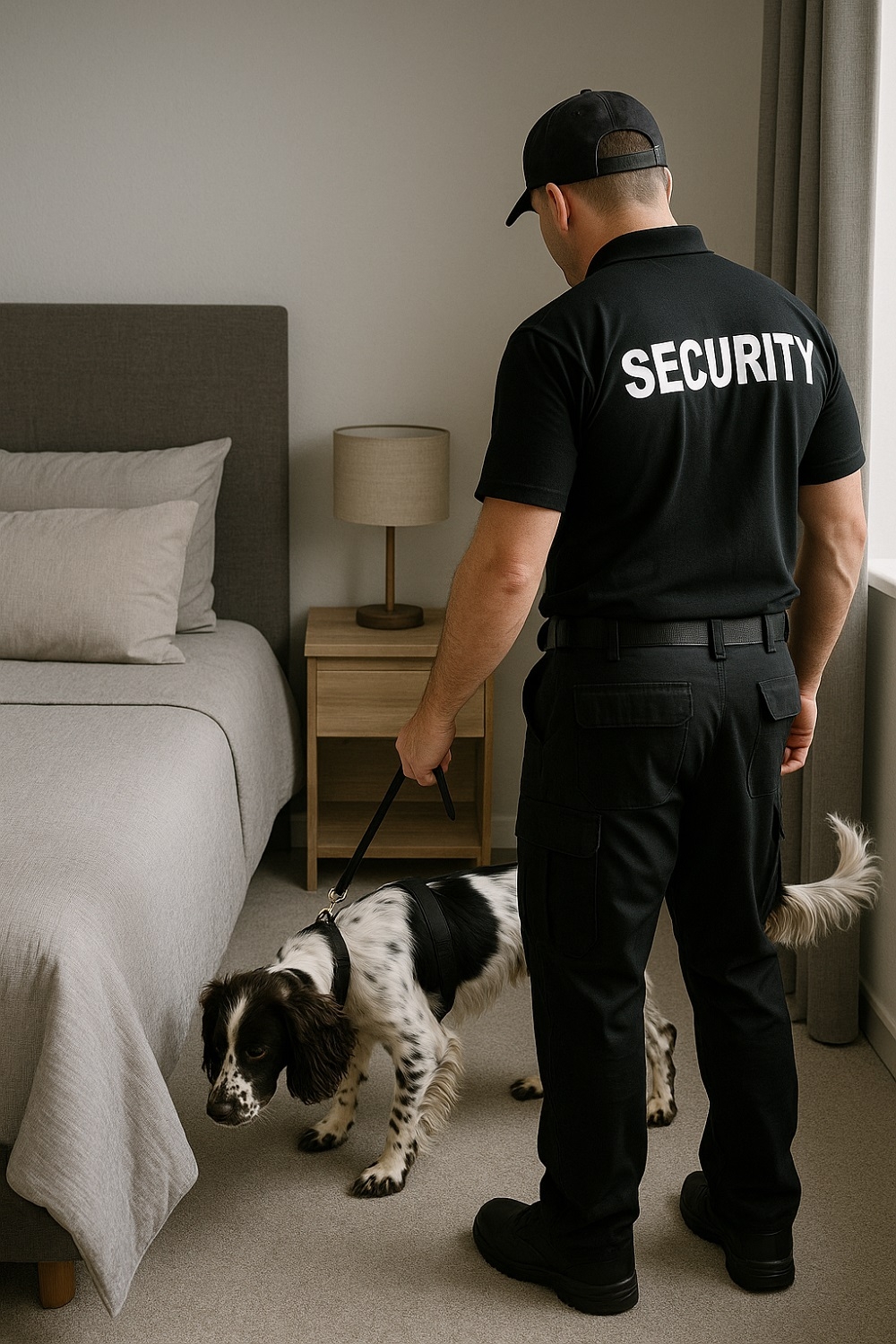Working Spaniels As Active Detection Dogs
When you picture a detection dog, the image of a Labrador often comes to mind. However, within the demanding world of active detection, another type of canine consistently proves its worth: the working-bred Spaniel, particularly Springer and Cocker Spaniels. These energetic, intelligent dogs are highly sought-after by prison services, police forces, and other government agencies across the UK and beyond for their unique skill set in locating hidden items.

Understanding Active Detection
As a reminder, active detection dogs are trained to pinpoint the exact location of a target scent (such as drugs, explosives, cash, firearms, tobacco, or even mobile phones) and give a distinct, physical indication directly at the source. This often involves scratching, digging, biting at the location, or freezing with an intense stare pointed directly at the spot. This unambiguous alert is crucial when searching specific items, vehicles, or defined areas.
Why the Working-Bred Spaniel Excels?
While sharing the fundamental requirement of an excellent nose with other detection breeds, working Spaniels bring a distinct set of advantages perfectly suited to the active detection role:
- Incredible Drive and Stamina: Working Spaniels are renowned for their boundless energy and insatiable work ethic. Bred for long days flushing game in dense cover, they possess exceptional stamina and an intense desire to hunt and search. They thrive on activity and remain enthusiastic through repetitive search tasks.
- Compact Size and Agility: Their smaller, lighter frame is a significant asset. Spaniels can easily navigate cluttered environments, squeeze into tight spaces within vehicles, investigate intricate pipework or ventilation shafts, and thoroughly search baggage or parcels where larger breeds might struggle. Their agility allows for quick changes of direction and rapid searching.
- Keen Olfactory Sense: Don't let their smaller size fool you; Spaniels possess highly sensitive noses capable of detecting minute traces of target odours. They are known for working quickly, often using a combination of air scenting and detailed ground searching.
- Eagerness and Trainability: Working Spaniels are intelligent and typically possess a strong desire to please their handlers. They are highly motivated by rewards, particularly retrieve-based play (like tennis balls), making the training process dynamic and effective.
- Natural Hunting Instinct: Their inherent hunting background translates well to detection work. They naturally quarter ground, investigate areas thoroughly, and demonstrate intense focus when they are onto a scent.
- Enthusiastic Temperament: While intense and focused when working, they are generally sociable and interact well with their handlers, forming strong partnerships essential for effective teamwork.
- Prison Service: Ideal for rapidly and thoroughly searching cells, workshops, mail rooms, and visitor property areas. Their size allows access under beds, inside lockers, and within cluttered spaces often used to conceal contraband like drugs, SIM cards, and phones.
- Police Forces: Frequently used for drug detection (vehicle searches, building searches during warrants), firearms recovery, cash detection, and searching luggage or parcels. Their speed and agility are invaluable for clearing areas quickly and accessing hard-to-reach spots in vehicles or properties. Explosive detection variants are also common.
- Other Government Agencies (e.g., Border Force, Customs): Excellently suited for scanning baggage carousels, freight depots, postal hubs, and vehicles at points of entry. Their speed helps process high volumes, and their size is perfect for investigating tightly packed cargo or luggage for illicit goods like tobacco, drugs, animal products, or large sums of currency.
It's vital to understand that the Spaniels used for detection are almost exclusively from working lines. These dogs have been bred for generations prioritising working ability, drive, scenting capability, and athleticism over the physical characteristics favoured in the show ring. They often look quite different from their show counterparts, typically being leaner, faster, and possessing an unwavering focus on the task.
Conclusion:
The working-bred Spaniel is a compact powerhouse in the world of active detection. Their unique combination of boundless energy, agility, a superb nose, and an intense drive to search makes them exceptionally effective at finding hidden items in challenging environments. For agencies needing fast, thorough, and precise location of contraband in everything from vehicles and buildings to mail and luggage, these tireless and enthusiastic dogs are an invaluable asset, proving that incredible capability often comes in a smaller package.
